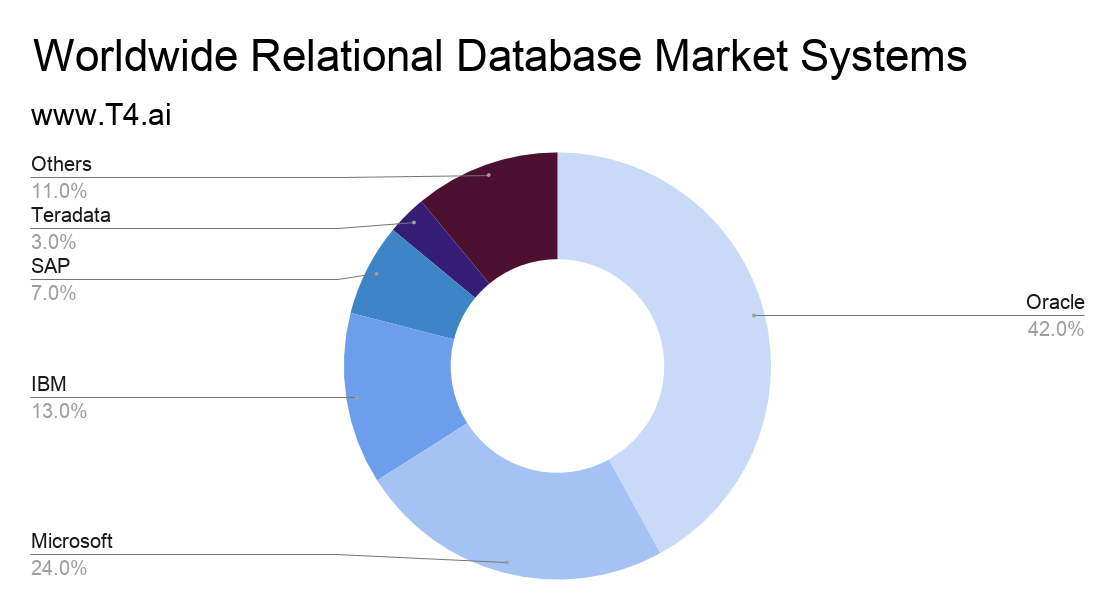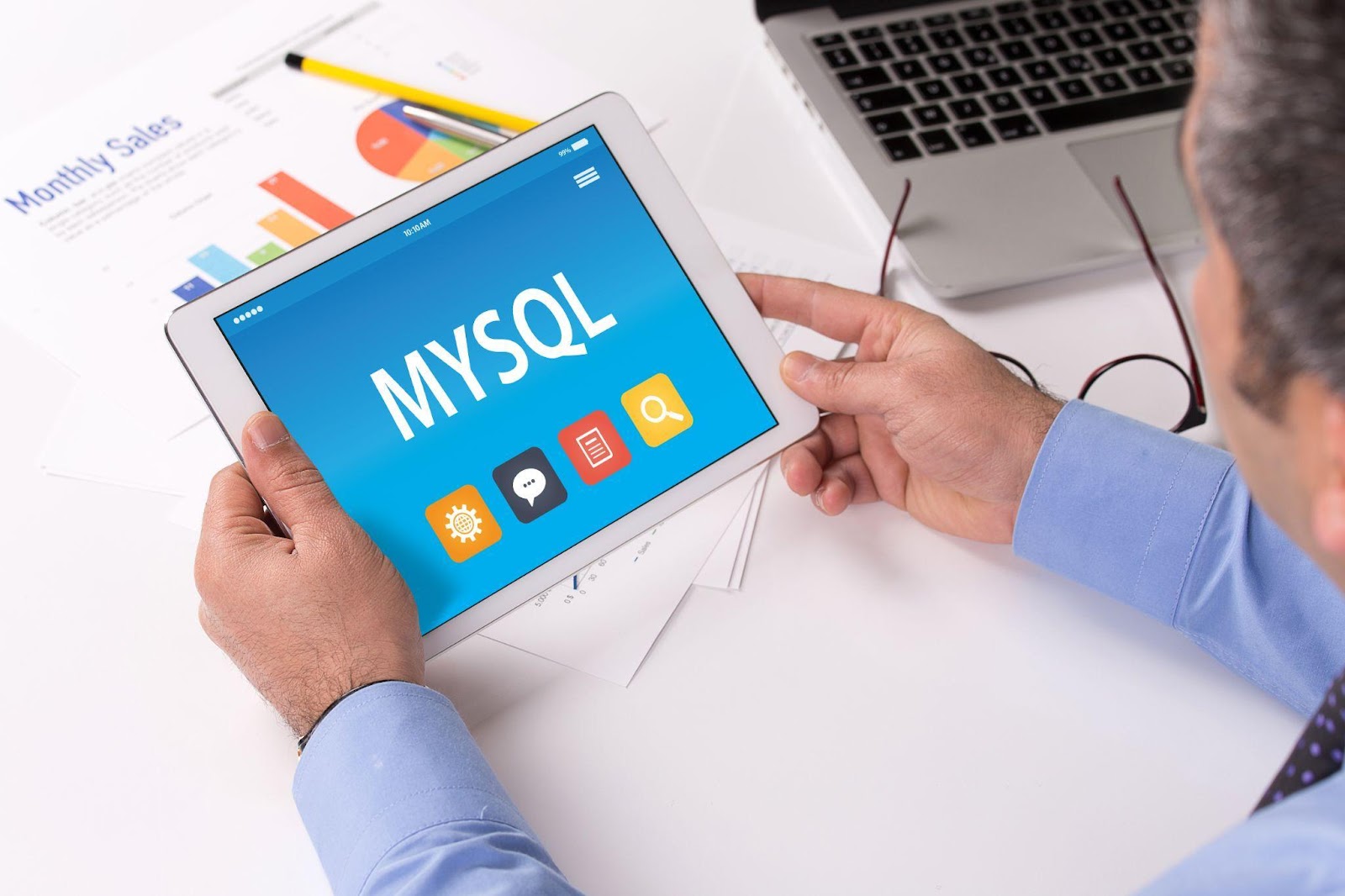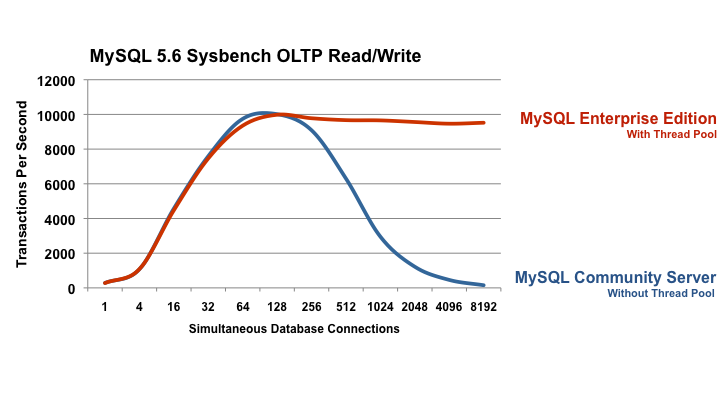What is MySQL?
Large volumes of data flood into businesses on a daily basis. What makes this data special is not the large volumes but the value it holds. The data is often used to generate insights on certain patterns which are important to increase productivity and get better throughput. But to ensure that the desired results are achieved, the data needs to be stored and organized in databases that enable easy access, modification, and management of the data.
Decision-makers in major organizations understand the importance of the value this data brings and how it is extremely useful for the business. Are you one of the people who understand the significance of these insights? If you do, you must also understand the importance of having a reliable high-performance database system and the perfect solution to that is MySQL database.
MySQL is a popular open source database management system and a widely used technology in the big data environment. Anyone who is even remotely associated with big data, enterprise data, or IT, in general, should familiarise themselves with MySQL and understand how MySQL management works. But the question still remains, “What is MySQL?”
In technical terms, MySQL is a relational database management system based on Structure query language (SQL). Developed by Sun Microsystems, it was later acquired by Oracle along with other software and hardware components. The 2010 deal was valued at around $7.4 billion. Currently, MySQL has an active user base of over 5 million users with an average of 35,000 daily installs.
Being an open-source database, MySQL database has been free to use. After the acquisition by Oracle, the company continued to offer it as a free-to-use product but at the same time offered several other commercial versions of the product. Because of this, deciding which version to pick can be tough.
MySQL is an integral part of all major organizations including popular internet organizations such as Facebook, YouTube, Twitter, Instagram, and Wikipedia. It enables the development and maintenance of all possible web applications, software, and even the most complex data-driven B2B services. In fact, MySQL has a market share of 42.00% in the relational database market.
Source: T4 AI
So if you are reading this and wondering whether this is the place where you can finally understand the difference between the MySQL community edition Vs enterprise edition , continue reading!
Why use MySQL?

Another very important question that needs to be answered is the ‘Why’. Why is it that all the major industries, corporations, and businesses use MySQL when there are many other options available? Let’s have a look at the reasons.
- Compatibility: MySQL was originally designed to ensure maximum compatibility. This includes not only web services and applications, but several other technologies and architectures. The relational database system is widely compatible and runs on all major operating systems including Unix-based operating systems such as macOS and Windows.
Another important factor that enables seamless compatibility is the client-server architecture that supports multiple backend and programming interfaces. This architecture allows for easy migration of data to its forks such as MariaDB, other RDBMSs, and even general storage systems (physical and cloud-based).
MySQL’s compatibility can also be credited to its ability to be deployed in a virtual environment or portable standalone library.
- Easy-to-use: The tabular model of MySQL allows for an easy-to-use experience despite the relational nature of the databases and their storage structure. From installation to database server configuration of workloads, we can implement it easily. The variety of data structures that MySQL uses include standard data types such as numeric, date, time, alphanumeric, and more advanced data types such as JSON.
This universal acceptance along with tools it offers for MySQL management such as analysis, reporting, and filtering of the data. - Data organization: Because MySQL is a relational database, it stands out from other database management systems since the data is stored in an organized set of individual tables, unlike other databases where the data is often unstructured. This simple process of organizing the data optimizes data processing in processes such as data retrieval, updating information, and even indices establishing the relation between two different tables.
This quality of being relational is very popular among the users simply because it allows them to use a simple programming language. This results in the enforcement of logical rules in the SQL engine, thus saving a lot of time and resources. - Open-source environment: Coming to why we started this whole conversation, being a popular open source database product makes MySQL a relied-upon solution for major organizations. Being open-source allows any individual or enterprise unrestricted use of the MySQL code base enabling them to modify, publish, and expand.
Released under the GNU General Public License (GPL), a commercial license can be purchased if the MySQL code needs integration or inclusion in a commercial application. The community of MySQL makes the documentation and support for the recently released version easy.
Community Edition v/s Enterprise edition
Now that we have a brief understanding of MySQL, its history, and its benefits, let’s dig deeper and understand these two different versions. A lot of people are often confused about the two different versions that are offered.
To end this confusion and give you a better idea about each of their offerings, let’s look at the similarities and the differences between the two. By the end of this article, you will have an understanding of both versions which will help you decide which version is the best for your organization and its goals.
MySQL Open-Source Community Edition
Being an open-source product, MySQL offers the MySQL Community Server that is freely available on over 20 platforms that include Windows, Linux, Unix, and Mac OS to name a few.
Multiple storage engines offered in the community edition include InnoDB, MyISAM, and memory and Network Database (NDB). The databases are also modeled, developed, and administered by the Oracle MySQL workbench community tools.
The community edition uses the General Public License (GPL) that allows the user to access and modify the source code. The updated code can be distributed as a part of the tool. When using the community edition, you, as a user of the version must understand and adhere to the terms and conditions of the GPL.
If you are embedding the community edition in your application, the source will have to be made available under the General Public License. This is exactly the reason you need to ensure that you understand the terms.
Before moving further, we need to know what the GPL or the GNU General Public License is. In simple terms, GPL is a list of terms and conditions used for copying, modifying, and distributing free software.
Fun Fact: Created by Richard Stallman, it was brought into existence to prevent and protect any GNU software from being made proprietary.
Oracle also offers a Cluster edition which is a variation of the community edition and is freely available. The Generally Available (GA) cluster edition offers the same basic features as the community edition but adds a distributed, multi-master architecture. This enables the scalability of MySQL across multiple systems and ensures fault tolerance.
MySQL Enterprise Edition
If you have the need for the latest features and 24×7 support from Oracle, the MySQL Enterprise edition is the best bet. The enterprise edition is built on the standard edition of MySQL.
The standard edition, in addition to the offerings of the community edition, offers several other add-on high-performance features. Unlike the MySQL workbench community edition, you get a MySQL workbench standard edition that supports more features such as automation of database documentation and MySQL router.
The enterprise edition builds upon this and focuses on features that are specific to the enterprise. Moreover, with the enterprise edition, Oracle offers the MySQL workbench enterprise edition tool. Along with the tool come several advanced features such as the tools to monitor MySQL servers, data backup facility, and implementation of enterprise security. The tools focus on scalability and increased availability. Here is an example of how the scalability increases as compared to the community edition.
Source: MySQL Official Documentation
Unlike GPL, MySQL is an alternative license that authorizes the user to distribute MySQL without having to share the code with the community. An annual subscription for the same costs $5000.
As a user of the enterprise edition, you are also entitled to Oracle premier support that offers support resources and technical assistance.
Which one should you choose?
Now that you understand the different editions of MySQL that are available and what they have to offer, you need to list out the things that your organization is looking for.
Once you categorize your requirements and match them with the offering, you will be able to find the perfect solution for your requirements. MySQL has a lot of potentials and one needs to realize the same to make the most of it.
If you are willing to distribute your tool under the GPL and can abide by their terms, the community edition might be the option for you. But if you are someone who is looking for additional features along with the ability to monitor performance constantly, good technical support, a secure and well-managed server along with other benefits, the MySQL enterprise edition should be your next pick.
Coming to cloud-based deployments, both versions are available on most cloud platforms. For sure Azure & Amazon RDS has only MySQL community, the workloads are well managed with the enterprise version and also a better high-performance with the multi-threading plugin, the lamp is only with MySQL community.
Clearly, the enterprise edition comes with certain benefits and advantages over the free version. These are probably the reasons that in 2021 alone 1,40,912 organizations have started using MySQL. Let us have a look at them:
- The enterprise edition offers Oracle premium support which becomes essential when data is your priority and when a database service is required or you need to modify the configuration. In addition, it also offers Oracle consultative support.
- Getting a MySQL router is another benefit that does not come with the community edition. It not only enables transparent routing between the servers and application but also increases scalability and availability through effective database routing.
- It offers a bunch of exciting features such as backup options, increased stability, security, enterprise monitoring, and even more.
- The workbench offered in the enterprise edition offers more tools than the community edition making productivity better and output seamlessly.
Conclusion
If you are responsible for making the decisions in your organization and are looking to decide between the community edition and the enterprise edition the above pointers will give you clarity. Careful considerations are required along with a comparison of your requirements to the offerings of each version. And if you need additional consultation when deciding on the version, feel free to reach out to us and get professional guidance. At OptimizDBA, we offer consultation on getting the right database systems and maintaining them.

